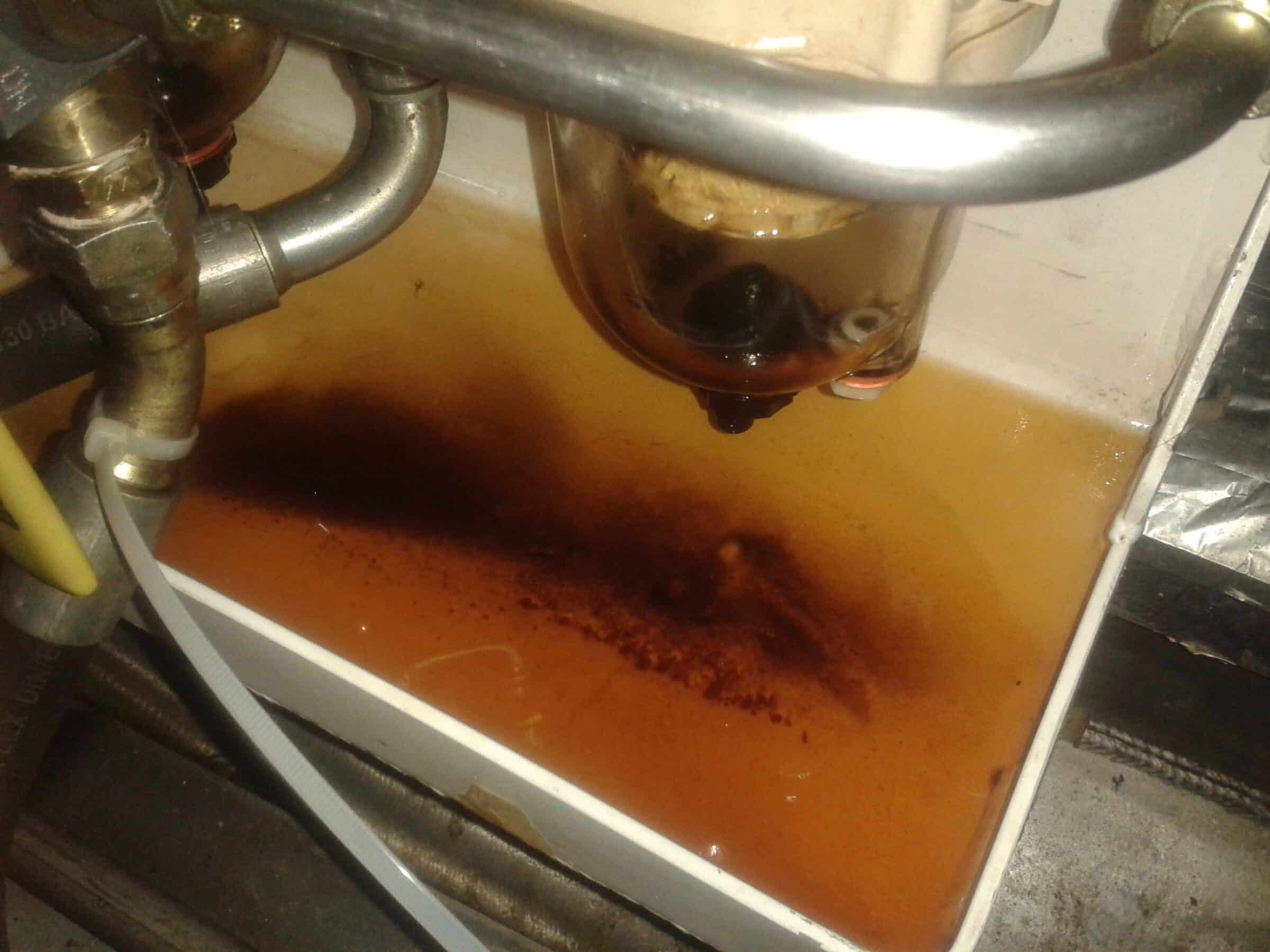An interesting case I had recently where I was asked to do a bit of independent consultancy after 5 small cable laying vessels suddenly started experiencing engine problems. I came into this half way through as a neutral party for the bunker fuel storage owners, the vessel owners and the fuel suppliers. It had already been established the issue seemed to have arrisen after the vessels had each filled up at the same place, but the confusion was that many other vessels had used the same location and not reported issues. My initial involvement was to test the batch sample of fuel from the fuel supplier to rule out a rogue batch of fuel, but it conformed to the relevant fuel standards, so I conducted a site wide survey to help them better understand the problem.
I started by visiting one of the effected vessels and from the pictures of fuel drained and collected by the skipper the fuel was clearly contaminated. Unfortunately the sample that had been taken by the skipper was done using a water bottle so although the sample had a high concentration of water the samples validity wouldn’t have held much weight legally as the sample containers could have contained water traces.


We later took some samples using approved containers from another vessel and the issue indeed seemed to be high water contamination. Analysis showed the water was a fresh water source and not sea water.
The site had quite a complicated network of storage tanks fuel was transferred to, but to simply things for this story, the main storage tank had recently been closed off for 6 weeks as a pontoon had been built to allow easier delivery of fuel (see below). This was the location the vessels had been filling from, but samples taken when first opening the pontoon were all perfect passes and good quality fuel.

We followed the route to where the original storage tank was, that now acted as a header tank, in effect filling the pontoon tank when it’s fuel levels depleted. When inspecting the tank I noticed the filler cap had a hole in (see below), and despite being a nice sunny day on the day we inspected the site, it had been very rainy for the previous few weeks and most of the tank tops showed free-standing water.

It appeared that both rain and condensation from tank breathing led to water getting into the tank, building up over the 6 weeks of the pontoon being built.
The question that still remained though, was why had not every vessel that filled up been effected and why had the tank sample taken when first opened not been effected.
After walking round the site I noticed the incline on first look at the pontoon had changed from the morning to afternoon quite significantly and asked out of curiosity what are the high and low tide marks of the pontoon. It turned out the highest point of high tide takes the pontoon tank slightly above the filler tank, whilst when at low tide it is way beneath the filler tank. Because water is denser than fuel it means at high tide the pontoon tank is pure diesel, but when low tide all the water falls into the pontoon tank making it pure water.
I asked could we have the times of fillings for the engine failures vs the tidal charts and it was a perfect match. Having found the culprit tank, it was drained, the fill cap replaced and a dessicated breather was added.
We also agreed a regular monthly top, middle and bottom of all bulk storage tanks checks to confirm no water was accumulating in addition to the usual sample taken when bulk deliveries of fuel were delivered.
If you have a bulk fuel storage tank on site why not consider testing that for contamination before filling up your machinery. The cost of fuel sample is far less than multiple machine failures from poor fuel storage conditions.


